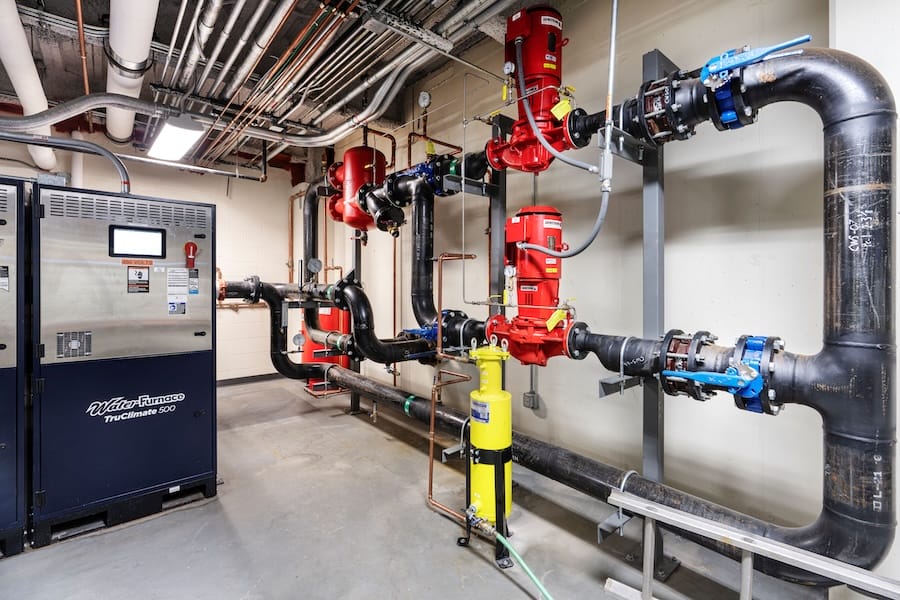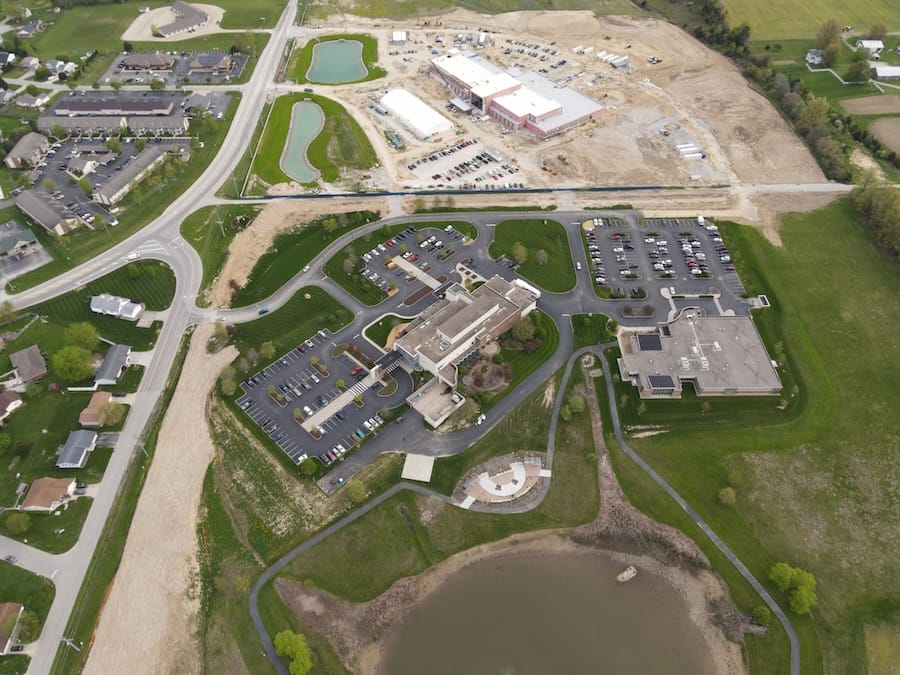In today’s healthcare landscape, hospital administrators face a critical challenge: how to maintain round-the-clock operations and ensure patient comfort while managing razor-thin margins.
Energy-efficient retrofits – particularly geothermal HVAC systems – have emerged as a powerful solution that addresses all three concerns simultaneously. These upgrades create more resilient facilities, cut operational costs, and improve the healing environment. The key is understanding where current facility and operational challenges lie and how different solutions can help.
The hidden energy burden of healthcare
While power-hungry data centers tend to dominate the conversation, not many are aware of how energy-intensive medical facilities are. The 2023 Hospital Energy and Water Benchmarking Survey revealed that healthcare facilities account for nearly 10% of all commercial building energy use in America and generate 8.5% of the nation’s greenhouse gas emissions. This translates into an $8 billion annual energy bill for the sector.
These retrofits couldn’t come at a better time. Hospital operating margins have steadily eroded since 2019. Though the national average improved slightly in 2023, rural hospitals continue to lag behind their urban counterparts (3.1% versus 5.4%). Energy upgrades offer a dual benefit: they reduce environmental impact while tackling one of healthcare’s largest fixed expenses, improving operational margins regardless of geography.
What do these energy-efficient upgrades actually look like?
Geothermal HVAC represents a fundamental shift in building systems. By tapping into the earth’s constant underground temperature, these systems provide sustainable heating and cooling without fossil fuels. The financial impact is immediate and substantial, reducing energy costs by 50% to 70% compared to conventional HVAC systems.
According to the U.S. Department of Energy, geothermal heat pumps are in use across all 50 states, with growing adoption driven by their efficiency and environmental benefits. A study by NREL and ORNL found that installing geothermal heat pumps in 70% of U.S. buildings could save 593 terawatt-hours of electricity annually, avoid seven gigatons of carbon emissions by 2050, and eliminate the need for 24,500 miles of new transmission lines.
Geothermal systems also offer financial incentives, such as tax credits, making them an economical choice for building owners. As Alejandro Moreno from the DOE notes, “Geothermal heat pumps are a ready-made strategy for decarbonizing buildings, reducing electricity demand, and saving energy nationwide—all while creating U.S. jobs.”
While these retrofits typically pay for themselves over time, available tax incentives dramatically accelerate ROI. Despite potential shifts in the federal landscape, the Inflation Reduction Act (IRA) continues to offer significant opportunities, particularly for non-profit healthcare organizations. These incentives slash payback periods, making the economics increasingly compelling.
Case study: Margaret Mary Cancer Center
Margaret Mary Health recently completed a geothermal conversion of its Cancer Center Central Plant, replacing a 210-ton air-cooled chiller with 68 geothermal wells and three 60-ton heat pump chiller modules. One of the first healthcare projects to apply for Inflation Reduction Act (IRA) funding, it initially aimed to save $300,000–30% of project costs–with a six-year ROI. In actuality, it was able to leverage a domestic content bonus credit (which boosts the tax credit by 10% for projects built with enough U.S.-made or manufactured products), increasing its credit to 40%, and has now been paid $413,000.
CMTA, a Legence company, led the MEP design and assisted in securing IRA funding. Initially part of hospital replacement pre-planning, the upgrade gained Board approval to increase the budget from $500,000 to $1.1 million, with a four to five-year payback through IRA incentives and energy savings.
The shift to geothermal reduces natural gas use, enhances heating and cooling, and improves equipment longevity—critical for rural healthcare resilience. Margaret Mary Health was able to reduce its natural gas consumption by 80%. A retro-commissioning process is further optimizing efficiency. Margaret Mary Health’s collaboration with CMTA highlights how healthcare facilities can leverage IRA funding to create healthy, energy-efficient, and more resilient buildings.
Healthcare facilities are embracing geothermal innovations
Healthcare facilities are increasingly turning to geothermal systems to reduce natural gas dependence, improve equipment longevity, and strengthen operational resilience, especially in rural areas. These systems offer more efficient heating and cooling, which contributes to greater cost savings over time.
Strategic collaboration with experienced engineering partners can streamline the funding process for facilities. The result? Energy-efficient, high-performing buildings that are better for patients, sustainable, and support financial goals.
Moving forward with confidence
Some healthcare executives may hesitate to commit to energy upgrades amid political uncertainty. As future budgets take shape, decision-makers should remember that energy efficiency has remained a rare point of bipartisan agreement since the 1970s oil crisis. It stands as a proven strategy for reducing costs, strengthening infrastructure resilience, and limiting emissions, with today’s technologies delivering unprecedented returns on investment.
Image Sources: CMTA, Inc.

Doug Hundley
Doug Hundley is Vice President of CMTA.








